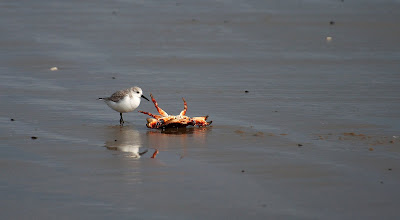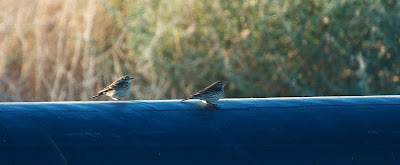

 I saw two new species on Saturday at Bayocean Spit; the Glaucous Gull posted earlier and these Red-throated Loons. At least I'm pretty sure they are Red-throated Loons. There is a fair amount of variation in the neck coloring, but the cleanest of the birds fit well for a non-breeding Red-throated.
I saw two new species on Saturday at Bayocean Spit; the Glaucous Gull posted earlier and these Red-throated Loons. At least I'm pretty sure they are Red-throated Loons. There is a fair amount of variation in the neck coloring, but the cleanest of the birds fit well for a non-breeding Red-throated.I believe the smudgier necked birds are juvenile as Sibley has illustrated them with more dark gray coloring.
If you look closely at the second bird from the right in the lower image, you will see that it has some reddish feathers on its lower neck. I wonder if these could be breeding color feathers?














































